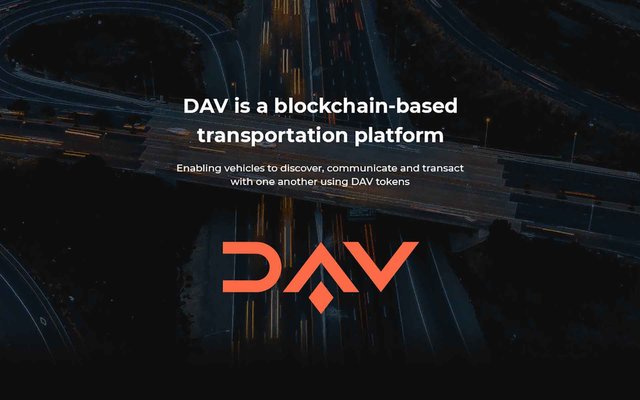
If you follow the latest trends in transportation, then perhaps you’ve heard the acronym “ACES.” The term is used to describe the quadruple punch of “autonomous, connected, electric, and shared” vehicles. Progress on any one of the four developments (for example, self-driving cars or EVs) can be individually assessed. But the true promise of ACES will come when all four technologies merge to become a decentralized, multidimensional platform that can be easily utilized by vehicles, mobility service providers, and all of us that need to get around. That decentralized platform is what the DAV Foundation’s blockchain is all about.
At DAV, we’re creating a blockchain that will serve as the backbone of a thriving marketplace for transportation services. We are no more able from today’s vantage point to imagine the ACES world of tomorrow than we were, in the 1990s, able to imagine what the Internet would become. A couple of decades ago, centralized companies like AOL ruled the net. But web-based protocols like IP, DNS, HTTP, and HTML transformed our online lives, paving the way for countless websites, ecommerce, blogs, social media, and gazillion apps. We believe that the DAV’s blockchain will provide the same type of protocols for transportation — with the same positive effects.
We’re not saying that some of our transportation choices won’t continue to work in centralized ways. In the case of trains (and airplanes), they work best when they are maximally occupied, running on reliably published schedules, and highly secure and safe. That requires a fair amount of centralized authority. But when autonomous, connected, electric, shared vehicles are introduced in big numbers, even subways and buses managed by municipalities will become one of many modes best managed by the crowd in a blockchain.
What ACES portends is a new level of efficient integration of the ways we get around cities: trains, buses, shuttles, delivery vans, trucks, SUVs, cars, small mobility pods, bicycles, scooters, and people moving around on foot. All of these modes can be either public, private or shared — and either human-piloted or autonomous. In fact, the distinctions between what is private, semi-private, and fully shared are already blurred.
Private companies like Ford’s Chariot now offer shuttles that function like city buses but take user inputs to create the best route. On my recent trip to China, I discovered that Didi (the big ride-hailing service there) allows users to hail an entire bus. On the other end of the spectrum, people will always (hopefully) continue to walk — if and when it’s efficient. That’s the point of a marketplace: to provide the ability for each member to make choices that offer the greatest value and convenience at the lowest price. Uber and Lyft become popular in gridlocked cities when it became too hard to find a taxi. The DAV blockchain will lower the barrier to entry so that anybody with a bright idea for mobility or shipping can launch a novel service on the coming Internet of Transportation.
The DAV blockchain extends well beyond hailing a car, sharing a bike, or getting a drone to deliver a package. It’s about the machine-to-machine interaction that allows self-driving vehicles to autonomously drive to an EV charging station and vehicles to share data with each other to improve digital maps and routing efficiencies. Road taxes, tolls, and insurance premiums can be collected (perhaps by the mile) and administered while passengers sit back and enjoy the ride. Data will become the new oil. The reputation of each node of the transportation web will be scored like Yelp reviews so that you’ll know which one is reliable. In the ACES world coming soon, no mobility service will be too niche.
The DAV Foundation is working hard to create a robust, open-source blockchain protocol — built on the core concept of decentralization — to help ensure that we have the richest and most diverse multi-modal transportation marketplace. Decentralized transportation has already arrived and the layer of autonomy is coming sooner than you think.
Source: DAV Foundation, posts by Bradley Berman — Lead Editor